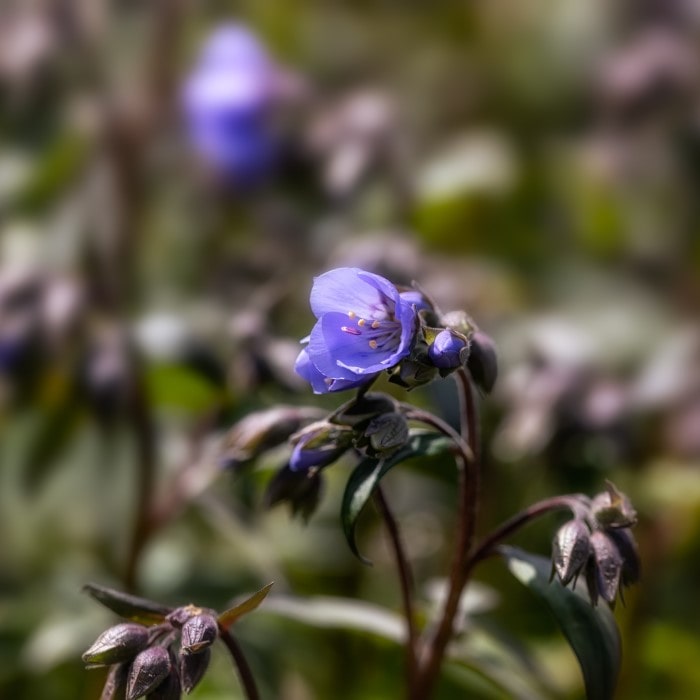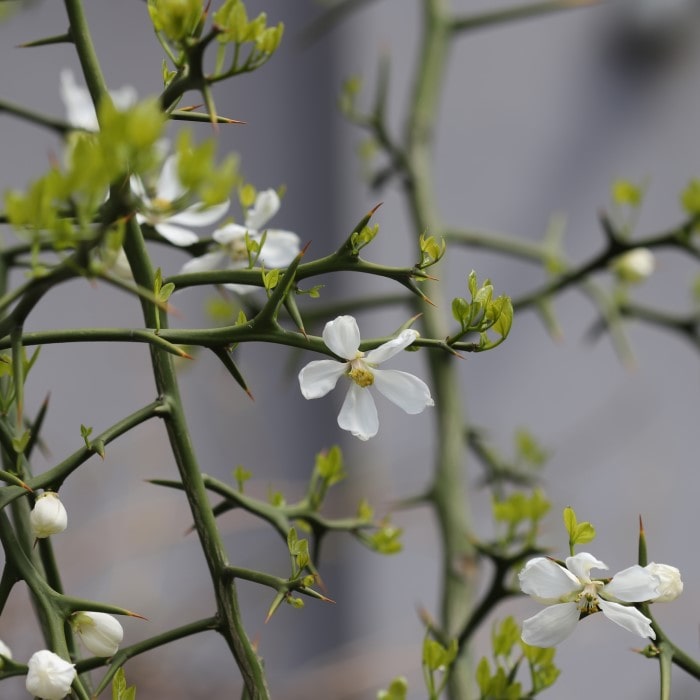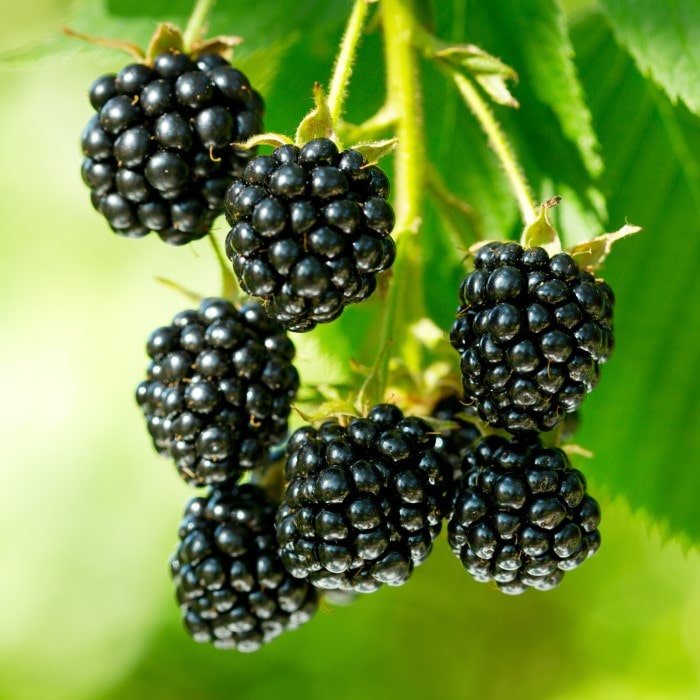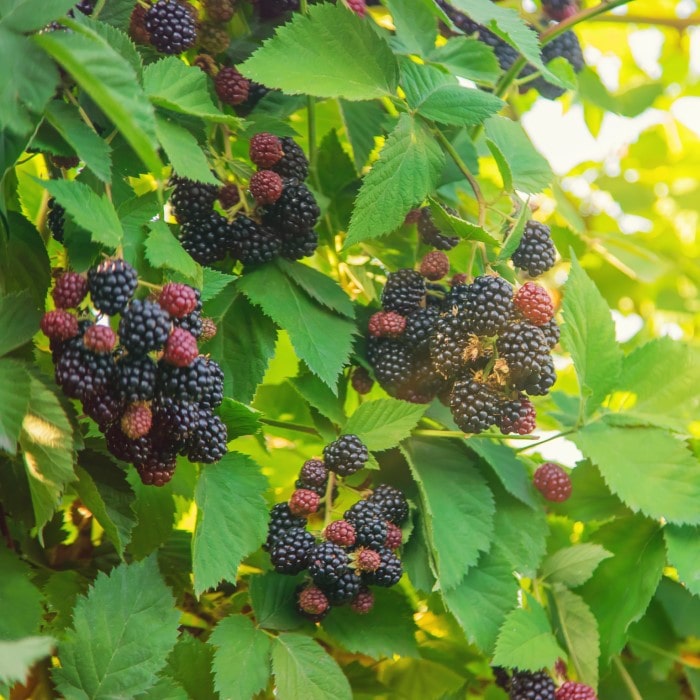Mandevilla hybrida
Overview
Uses: Houseplant, patio plant, or outdoor plant (in approved tropical zones)
Benefits: Air purifier: removes toxins such as VOCs from the air. Unique and beautiful growth patterns, colors, and foliage. Easy to take care of.
USDA Hardiness Zones: 10 - 11 (as an outdoor perennial)
Sun: Full Sun (suggested minimum of 6 hours of full sun daily)
Life Cycle: Perennial
Mature Height: 24"
Mature Width: 24"
Bloom Season: Early Spring to Late Fall
Summary
The Dipladenia Madinia® Deep Red is a proprietary hybrid shrub that produces some of the most beautiful red flowers that we've ever seen. The compact size of this perennial plant, only growing to a height and width of around 24", makes it perfect for both outdoor planting (zones 9a-11) and use as a houseplant.
Many people in cooler climates keep it outdoors as a potted plant in the warmer months, bringing it back inside prior to temperatures below 50 degrees Fahrenheit. It likes lots of sun, and is best kept in areas that get a decent amount of it, although a partial shade location is also acceptable.
No matter where you decide to keep your Mandevilla hybrida, be rest assured that its gorgeous 4" red flowers will brighten up the area.
Care
How Much Water Does a Dipladenia Need?
The Dipladenia Madinia® Deep Red is considered a drought-tolerant plant. Although it's able to go without water for some time, it's best kept regularly hydrated.
We suggest frequent, regular watering of Mandevilla hybrida, attempting to keep its soil moist but not soaked during times of growth— typically throughout late spring, summer, and early fall.
During times of slow growth, such as winter (especially in cooler climates), we suggest allowing the top few inches of its soil to dry prior to giving it more water. Following this rule will aid in the prevention of root rot.
How Much Humidity Does a Dipladenia Need?
Mandevilla hybrida loves humidity! Anything above 50% RH will likely keep it happy, but ideal conditions are in the range of 80% RH and above.
If you're keeping this plant in an area of lower humidity, we strongly suggest regular misting or utilizing a form of humidity modification such as pebble trays or humidifiers. Your plant will thank you!
How Much Sun Does a Dipladenia Like?
Full, direct sun is suggested for Dipladenia Madinia® Deep Red. Giving it such will likely result in a happy plant that produces amazing flowers.
Although a daily minimum of 6 hours of direct sun is suggested when growing Mandevilla hybrida, some growers have had growing success in less sunny areas, such as bright, indirect sun, and even partial shade.
What's the Best Temperature to Grow Dipladenia In?
Mandevilla hybrida does best when kept in temperatures above 65 and below 95 degrees Fahrenheit. It is able to handle temperatures as low as 50 degrees Fahrenheit without showing signs of damage.
It's approved for outdoor planting in zones 10a-11b, but it still may be adversely affected by the cold winter temperatures in some of those areas. If planted outdoors in these areas, it may be necessary to trim back your plant in the spring after it receives damage from the potential low winter temperatures.
What is The Best Soil for Dipladenia?
We suggest a well draining soil with a fairly balanced PH for planting Dipladenia Madinia® Deep Red. Our potting soil is a great option for growing these plants.
How to Fertilize a Dipladenia
We suggest fertilizing your Mandevilla hybrida throughout its growing season, which typically consists of late spring through early fall. We do not suggest any fertilization during periods of stunted growth, such as winter.
There are many different fertilization options that work well for this plant. Our Slow Release Fertilizer is one of these options.
Trimming and Maintaining a Dipladenia
Dipladenia Madinia® Deep Red should only be extensively trimmed over winter or in early spring. Extensive trimming during periods of growth will likely cause a lack or a severe decrease of flowers. It's not recommended to trim more than 1/2 of the plant away during any one season.
The maintenance of these plants is like that of many others. Trim dead and yellowing leaves as required. It's also suggested to trim away wilting and dying flowers as soon as spotted, as doing so will maximize the potential of other flowers to thrive.
As always, we suggest the use of use clean and disinfected tools for any plant maintenance and/or trimming.
How to Repot a Dipladenia
It's likely that you'll have to repot your Mandevilla hybrida on an annual basis during the first few years of its life. Do not allow this plant to become rootbound.
When repotting, do not repot this plant into a pot much larger than the one it's coming out of. We suggest not allowing any more than 2 inches of soil on any side between the root ball and the walls of the new pot.
Size
What Size Dipladenia Do You Sell Online?
The Dipladenia Madinia® Deep Red that we sell online will ship in a greenhouse grade grow pot. Each plant will be appropriately sized for its pot. Please contact us with any specific questions.
How Large Do Dipladenia Madinia® Deep Red Grow?
Mandevilla hybrida typically grow into a mound shaped shrub. Expect around 18"-24" of height and width when fully mature.
Additional Information
What is the Common Name of Mandevilla hybrida?
There are many varieties of Mandevilla hybrida, and their common names refer to their specific variety.
Dipladenia Madinia® Deep Red is the common name of the Mandevilla hybrida that we sell. It is sometimes referred to as Madinia Deep Red Dipladenia.
Toxicity and Risks of Dipladenia Madinia® Deep Red
Mandevilla hybrida is not listed as toxic by the American Society for the Prevention of Cruelty to Animals (ASPCA).
It does; however, contain toxins (especially in its sap) that render the plant inedible. If eaten, symptoms such as mild indigestion, excessive salivation, and diarrhea may result.
These toxins may also cause discomfort and irritation if they contact the skin.
Due to the mild toxicity of compounds within Dipladenia Madinia® Deep Red, it's best if they are kept away from areas where they may be bothered by children and/or pets.













